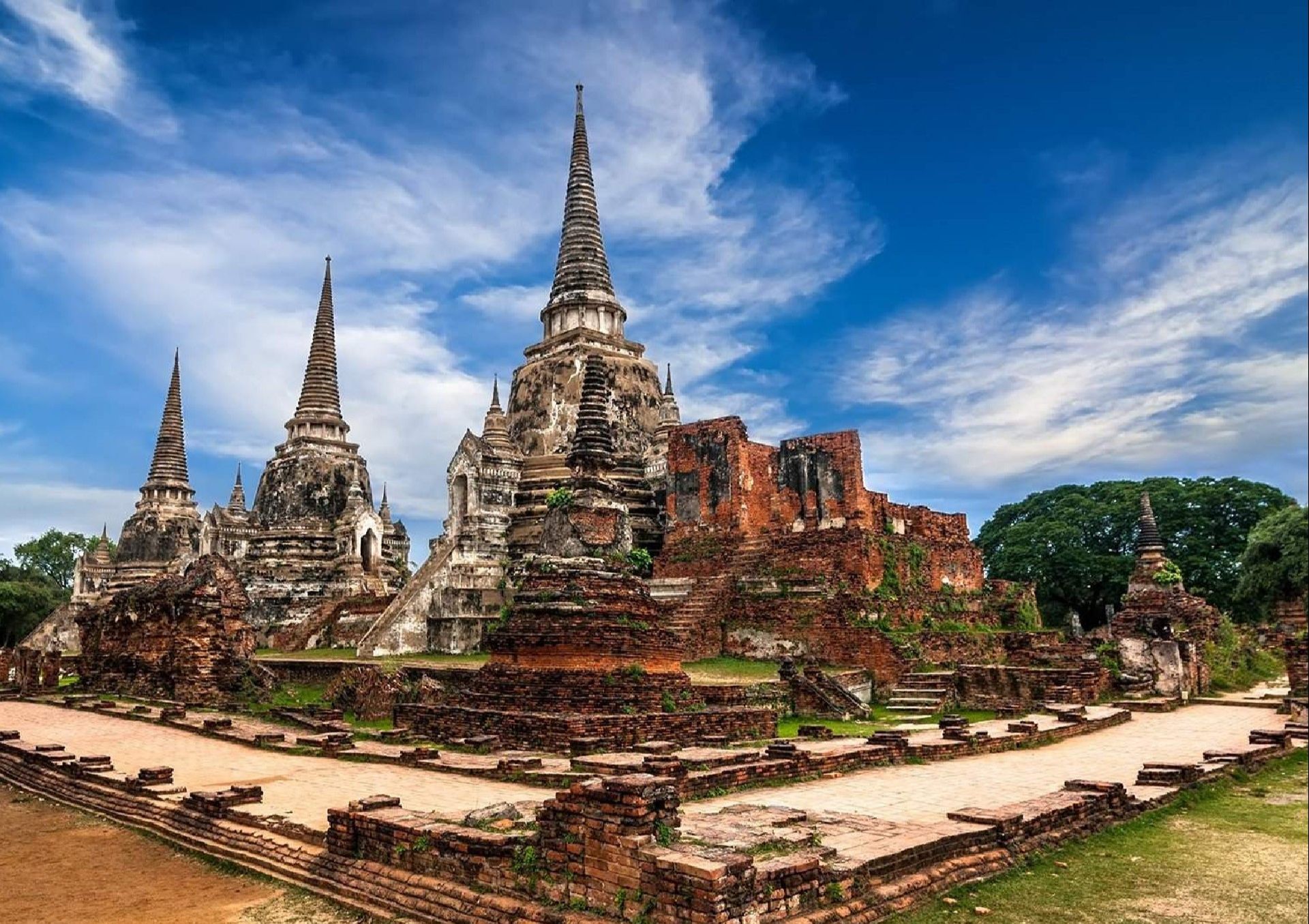All content and media files are published under a Creative Commons Attribution-ShareAlike 4.0 International License (CC BY-SA 4.0)
During four centuries, the ancient capital of Thailand, Ayutthaya, remained the largest city in the world. It was inhabited by more than a million people whose power and wealth were subjected to close attention in London and Paris. Twelve kilometers of high stone walls surrounded hundreds of temples, palaces and fortifications. Luxurious boats of wealthy citizens and noble guests glided along the canals. Today only ruins carefully preserved by the Thais after the invasion of the fertile Siam lands by the Bamar show the former greatness of Ayutthaya. Enviers mercilessly plundered temples, destroyed palaces and beheaded sacred statues. But even the remained parts could amaze travelers with their royal scale.
The largest temple of Ayutthaya, Wat Phra Si Sanphet, was erected on the site of the former royal place in 1448 by the order of King Boromotrailokanat. More than 40 years later, King Ramathibodi II continued the work of his family and two magnificent chedis were built near the temple. One of them contained the ashes of his father, and the other – ashes of Ramathibodi's elder brother, King Boromarachi III. The third stupa adorned the temple during the reign of King Boromarachi IV in 1592. The ashes of Ramathibodi II were placed there. Since then, three unique monuments of Thai architecture, the sacred abodes of Buddhist monks, have become a symbol of the historical capital and one of the main attractions of Ayutthaya.
According to the local legend, at the end of the 15th century, Wat Phra Si Sanphet housed the famous 16-meter statue of Buddha, which took about 350 kilograms of pure gold to cover. Unfortunately, the Bamar warriors destroyed the sacred relic and melted down valuable gold. Subsequently, King Rama I transferred the remains of the statue to the new capital of the kingdom, Bangkok, and placed them in the sacred Buddhist temple Wat Pho – the Temple of the Reclining Buddha, where they are still kept.
